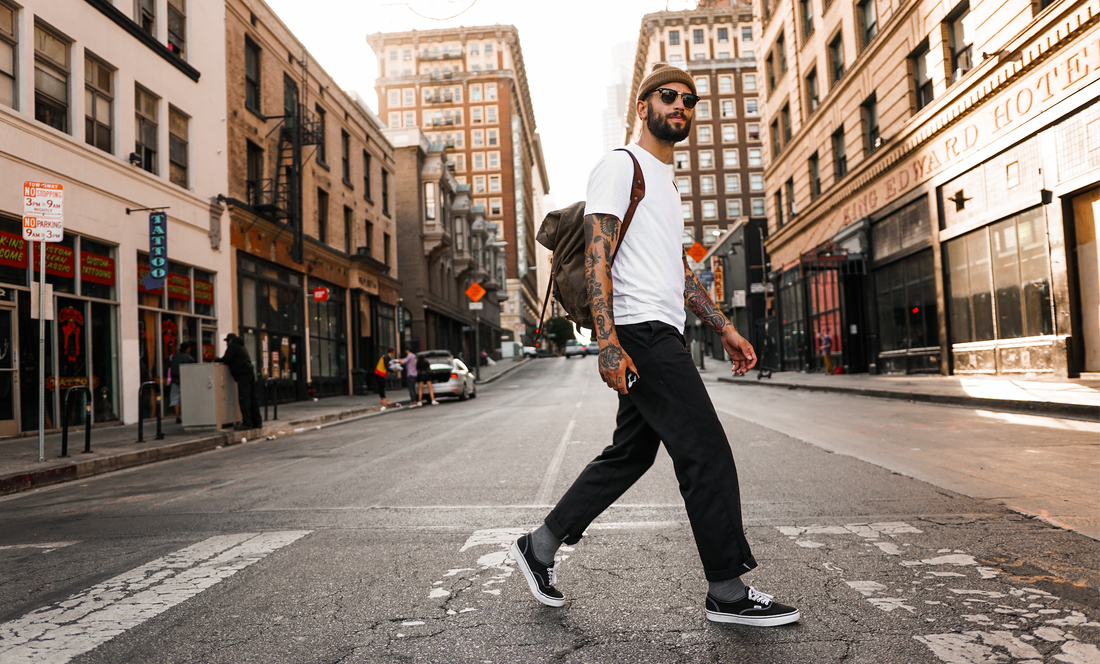People have many unique identifiers. The stature, the voice, the smell, facial expressions, gestures - and also the gait. We often recognize friends and family members from a long distance by it. We ourselves are mostly not aware of our own gait. After all, we very rarely see ourselves walking down a street in a completely natural and relaxed manner. This fact becomes particularly clear in model casting shows, when the participants go to great lengths to glide elegantly down the catwalk, but the result is often more reminiscent of the hobbling of a three-legged antelope. However, the way we appear to others while walking is not the main reason why we think a gait analysis can be useful. There is actually much more at stake here, namely your health.
What does walking have to do with health?
Your feet are your foundation. If they are crooked, buckled or too hollow, you will almost certainly run into problems at some point. Because if the base of the skeleton is not built up correctly, the imbalance that arises there is transferred to the whole body, which then tries to restore balance elsewhere. Knee and hip pain is particularly common as a result. What does all this have to do with the gait? Your feet affect how you walk and vice versa. A normal gait trains the foot and ensures that all joints - up to the knee and hip - can be at the right angle to each other. A "crooked" gait, on the other hand, can worsen foot malpositions and cause pain throughout the body. Nowadays many people have such a deformity. Flat feet, skew feet, splayfeet, club feet or combinations of these are not uncommon, but rather the rule. So if your long-term health is important to you, you should make sure your foundation - your foot - is straight.

Photo by Nino Liverani on Unsplash
You can usually find a first indication for an unhealthy way of walking on your shoes. Check out how they wore down. Are the soles of the right and left shoe worn equally in a pair? Have the insides or the outsides become thin? Has the heel area in particular been abrased? Apart from acute pain in the feet, knees or hips, these are good reasons to have your gait checked. That's called prevention! ;)

Photo by Rosan Harmens on Unsplash
What is a gait analysis and how does it work?
A gait analysis measures the spine and leg axes, as well as the dynamic foot pressure as central part. You run over a treadmill equipped with sensors, which records exactly how you distribute the weight on your foot and how you roll off in every phase of walking. In addition, it becomes visible whether the malposition - if there is one - is still flexible or has already hardened. This distinction is very important. Because if the former is the case, then the normal condition of the foot can be restored through targeted training, pain can be prevented and the performance of the foot can be increased.

Photo by John Robert Passionate on Unsplash
Back to the natural gait
If your feet need help regaining their balance, there are things you can (in consultation with your doctor) do. This includes specific exercises to strengthen the foot muscles, such as gripping a pen with your toes or standing on tiptoe and walking barefoot. Without shoes and preferably also without socks, numerous muscles in the foot are activated with every step, and it has to stabilize itself completely on its own. In particular, when the ground is uneven, the demands on muscular interaction increase.

Photo by Lucas Sankey on Unsplash
Healthy feet with the right shoes
Going barefoot is not always an option these days. Or do you think it's a good idea to walk around Paris or Berlin with bare feet? In fact, it's also very tiring if you're not used to it. So you won't be able to avoid buying any more shoes. When choosing the shoes, however, you should make sure that they protect and support your feet - not damage them even more. Unfortunately, that's the case with many models on the market: too hard, too heavy, too narrow - that's the usual triad of foot pain. Very often to be found in cheap fast fashion goods. Grandma said "who buys cheap, buys twice" - in this case you also damage your feet with it. Therefore: leave it!
Buy shoes that really fit you. They must offer enough space in length, but also be so generous in width that the toes are not squeezed together. In addition, an anatomically shaped footbed is a must. If your foot has been stepping on the same surface (the insole) for hours without any change, you can at least make sure that an optimal pressure distribution and a correct foot position are guaranteed. You don't only feel the benefit in the long term. You can feel the investment in high-quality shoes with an anatomical footbed on the first day. Your feet don't get tired as quickly and you don't get back pain as easily, even when standing or walking for a long time.
 Slides made out of vegan leather
Slides made out of vegan leather
One solution: Easy going slides with an anatomical footbed
Have you read this far? Awesome! Your feet seem to be really important to you. So, repeat after me: "I don't buy tight, hard, heavy shoes. I don't buy tight, hard, heavy shoes. I don't buy..."
But seriously: If you need inspiration for shoes that do something good for both - your feet and your wardrobe, then take a look at our shop. Here you will find super comfortable and anatomically shaped slides - either in bright colour combinations or understated monochrome. Toe freedom guaranteed!
Title photo by Mad Rabbit Tattoo on Unsplash

